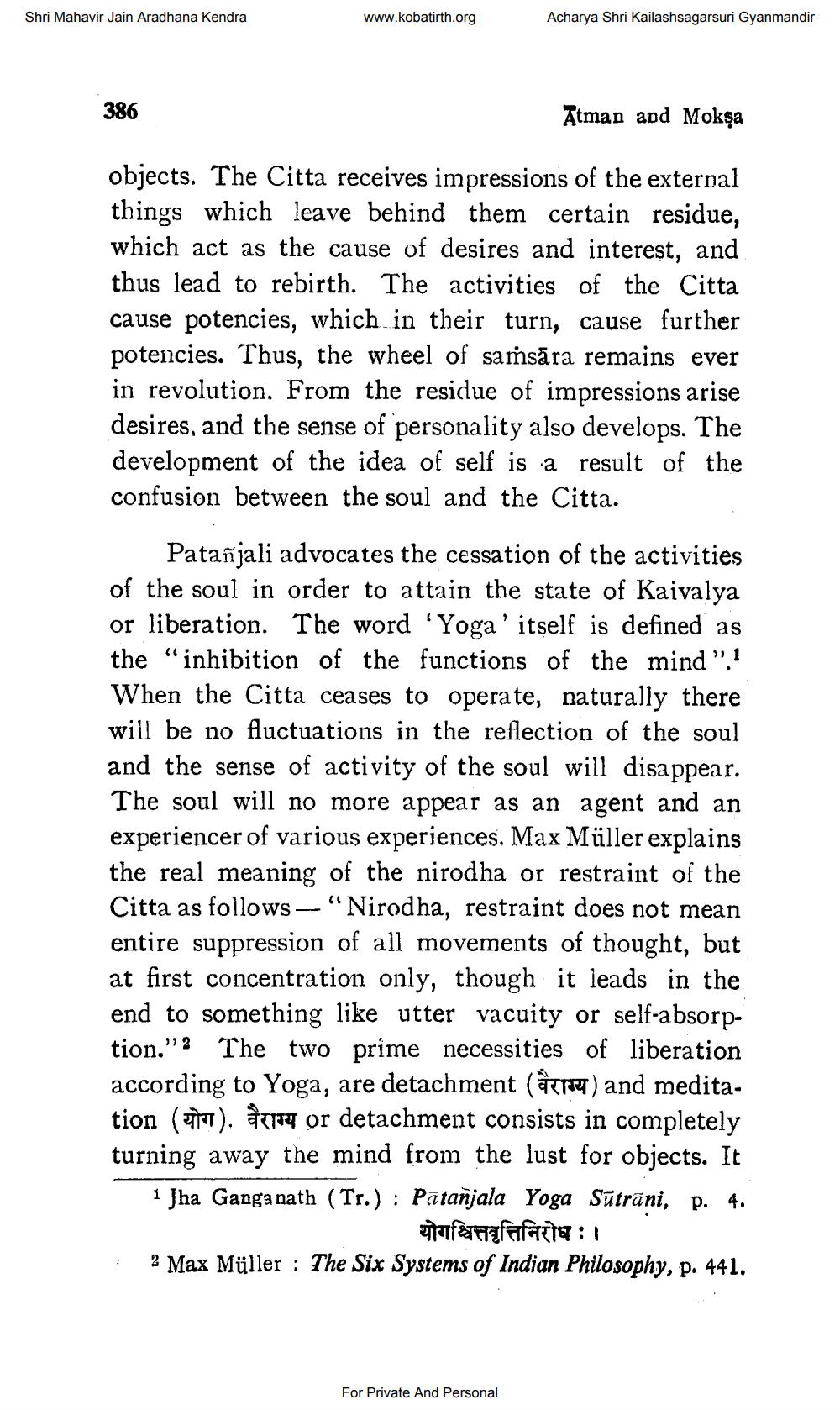________________
Shri Mahavir Jain Aradhana Kendra
www.kobatirth.org
Acharya Shri Kailashsagarsuri Gyanmandir
386
Atman and Mokỹa
objects. The Citta receives impressions of the external things which leave behind them certain residue, which act as the cause of desires and interest, and thus lead to rebirth. The activities of the Citta cause potencies, which in their turn, cause further potencies. Thus, the wheel of saṁsāra remains ever in revolution. From the residue of impressions arise desires, and the sense of personality also develops. The development of the idea of self is a result of the confusion between the soul and the Citta.
Patañjali advocates the cessation of the activities of the soul in order to attain the state of Kaivalya or liberation. The word 'Yoga' itself is defined as the "inhibition of the functions of the mind”.! When the Citta ceases to operate, naturally there will be no fluctuations in the reflection of the soul and the sense of activity of the soul will disappear. The soul will no more appear as an agent and an experiencer of various experiences. Max Müller explains the real meaning of the nirodha or restraint of the Citta as follows -- "Nirodha, restraint does not mean entire suppression of all movements of thought, but at first concentration only, though it leads in the end to something like utter vacuity or self-absorption."2 The two prime necessities of liberation according to Yoga, are detachment (actre) and meditation (योग). वैराग्य or detachment consists in completely turning away the mind from the lust for objects. It 1 Jha Ganganath (Tr.) : Pātanjala Yoga Sūtrāni, p. 4.
योगश्चित्तवृत्तिनिरोधः। 2 Max Müller : The Six Systems of Indian Philosophy, p. 441.
For Private And Personal




